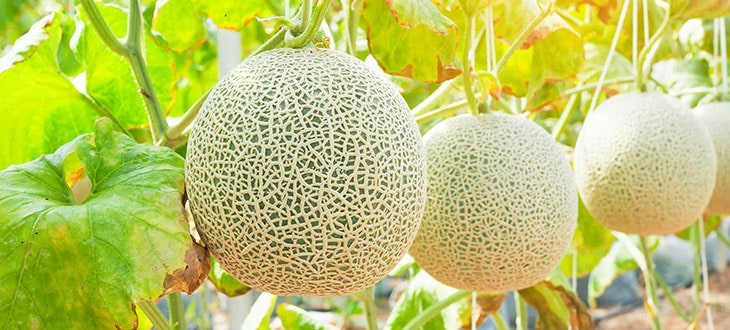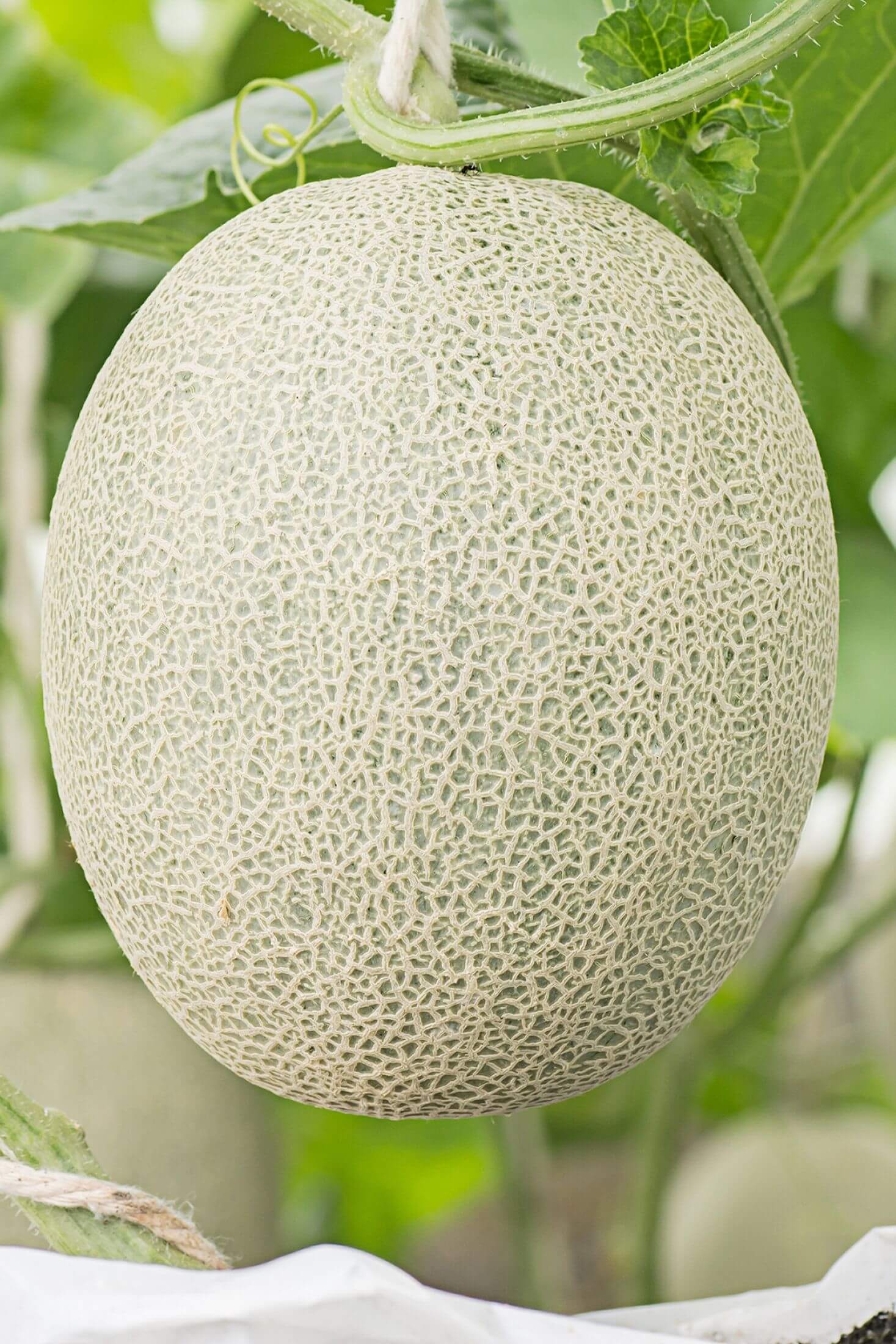Grow Juicy Cantaloupes With The Right Companion Plants
Grow Juicy Cantaloupes with the Right Companion Plants
Introduction
Nothing beats the taste of a ripe, juicy cantaloupe straight from the garden. But growing cantaloupes can be tricky, especially if you're not familiar with companion planting. Companion planting is the practice of planting certain plants together to benefit each other. By planting the right companion plants with your cantaloupes, you can improve their health, productivity, and flavor.
In this blog post, we'll discuss the benefits of companion planting for cantaloupes, and we'll recommend some of the best companion plants to grow with them. We'll also provide some tips on how to plant and care for cantaloupes, so that you can enjoy a bountiful harvest of delicious melons.
Benefits of Companion Planting for Cantaloupes
There are many benefits to companion planting with cantaloupes. Here are a few of the most important:
- Improved pollination: Cantaloupes are pollinated by bees, and companion plants that attract bees, such as marigolds and nasturtiums, can help to improve pollination and fruit set.
- Disease and pest control: Some companion plants, such as onions and garlic, can help to repel pests and diseases that can damage cantaloupe plants.
- Improved soil quality: Companion plants can help to improve the soil quality around cantaloupe plants, making it more nutrient-rich and draining better.
- Increased yields: Companion planting can help to increase the yields of cantaloupe plants.
Best Companion Plants for Cantaloupes
There are many different companion plants that can be grown with cantaloupes. Here are a few of the best:
- Corn: Corn provides shade and support for cantaloupe vines, and it also attracts bees.
- Sunflowers: Sunflowers help to deter pests and diseases, and they also provide shade for cantaloupe vines.
- Nasturtiums: Nasturtiums repel pests and diseases, and they also attract bees.
- Marigolds: Marigolds repel pests and diseases, and they also help to improve soil quality.
- Radishes: Radishes help to break up the soil and improve drainage, which can benefit cantaloupe plants.
- Lettuce: Lettuce helps to suppress weeds, and it also provides a good source of shade for young cantaloupe plants.
- Catnip: Catnip deters pests, and it also attracts beneficial insects.
- Basil: Basil helps to deter pests, and it also improves the flavor of cantaloupes.
- Oregano: Oregano helps to deter pests, and it also improves the flavor of cantaloupes.
- Mint: Mint helps to deter pests, and it also helps to improve soil quality.
- Tansy: Tansy repels pests, and it also helps to improve soil quality.
- Cilantro: Cilantro helps to deter pests, and it also improves the flavor of cantaloupes.
- Bee Balm: Bee Balm attracts bees, which helps to improve pollination.
Planting and Care
To plant cantaloupes, sow the seeds in well-draining soil that is rich in organic matter. The soil pH should be between 6.0 and 6.5. Cantaloupes need full sun and plenty of water. Water the plants deeply, but infrequently. As the fruits mature, reduce watering to prevent them from splitting.
Harvesting
Cantaloupes are ready to harvest when the rinds are hard and the flesh is soft when gently pressed. To harvest a cantaloupe, cut it from the vine with a sharp knife.
Conclusion
By following these tips, you can grow juicy cantaloupes with the right companion plants. With a little care and attention, you'll be enjoying delicious, homegrown cantaloupes in no time.
Are you growing cantaloupe in your garden this year? If so, you'll want to make sure you're planting it with the right companion plants. Companion planting is a gardening technique that involves planting certain plants together to benefit each other. There are many different companion plants that can be beneficial for cantaloupe, but some of the best include:
- Basil: Basil helps to repel whiteflies, which can be a major pest of cucurbit plants.
- Collard greens: Collard greens help to improve the flavor of cantaloupe.
- Lettuce: Lettuce is a fast-growing cool-season crop that can help to suppress weeds and improve the soil.
- Marigolds: Marigolds help to repel pests like aphids and nematodes.
- Nasturtiums: Nasturtiums help to attract pollinators, which will help to improve the pollination of your cantaloupe plants.
If you're interested in learning more about companion planting for cantaloupe, I recommend visiting Gardenia Inspiration. This website has a wealth of information on the topic, including a list of the best companion plants for cantaloupe, as well as tips on how to plant and care for these plants.
FAQ of companion planting for cantaloupe
Question 1: What are the best companion plants for cantaloupe?
Answer: Some of the best companion plants for cantaloupe include:
- Marigolds: Marigolds help to repel pests, such as cucumber beetles and squash bugs, that can damage cantaloupe plants.
- Nasturtiums: Nasturtiums also help to repel pests, and their flowers attract pollinators, such as bees and butterflies, which help to pollinate the cantaloupe plants.
- Radishes: Radishes are a fast-growing crop that can be planted alongside cantaloupes to help suppress weeds.
- Lettuce: Lettuce is another fast-growing crop that can be planted alongside cantaloupes. It also helps to shade the soil, which can help to keep it cool and moist.
- Herbs: Herbs, such as basil, oregano, and mint, can help to repel pests and attract pollinators. They also add flavor to the cantaloupes.
Question 2: What are some companion plants to avoid planting with cantaloupe?
Answer: Some companion plants to avoid planting with cantaloupe include:
- Cucumbers: Cucumbers and cantaloupe are both members of the cucurbit family, and they can cross-pollinate, which can affect the flavor of the cantaloupes.
- Squash: Squash and cantaloupe are also both members of the cucurbit family, and they can compete for resources, such as water and nutrients.
- Potatoes: Potatoes can attract the same pests as cantaloupe, such as cucumber beetles and squash bugs.
Question 3: What are the benefits of companion planting with cantaloupe?
Answer: There are several benefits to companion planting with cantaloupe, including:
- Improved pollination: Companion plants can attract pollinators, such as bees and butterflies, which help to pollinate the cantaloupe plants. This can lead to a better harvest.
- Reduced pest pressure: Companion plants can help to repel pests, such as cucumber beetles and squash bugs. This can help to protect the cantaloupe plants from damage.
- Improved soil health: Companion plants can help to improve soil health by adding nutrients and organic matter. This can benefit the cantaloupe plants and help them to grow healthier.
- Increased biodiversity: Companion planting can help to increase biodiversity in the garden. This is beneficial for the environment and can also help to attract beneficial insects, such as ladybugs and lacewings.
Question 4: How far apart should cantaloupe plants be planted?
Answer: Cantaloupe plants should be planted about 3 feet apart. This will give them enough space to grow and spread out.
Question 5: When is the best time to plant cantaloupe?
Answer: The best time to plant cantaloupe is after the last frost date, when the soil temperature is at least 65 degrees Fahrenheit. In most areas, this is in late spring or early summer.
Image of companion planting for cantaloupe
Here are 5 different images of companion planting for cantaloupe from Pinterest.com:
Marigolds are a great companion plant for cantaloupe because they help to repel pests. They also attract pollinators, which can help to improve the pollination of your cantaloupe plants.
Nasturtiums are another great companion plant for cantaloupe. They help to deter pests, such as cucumber beetles, and they also attract pollinators.
Radishes are a good companion plant for cantaloupe because they help to loosen the soil and improve drainage. They also help to suppress weeds.
Lettuce is a good companion plant for cantaloupe because it helps to shade the soil and prevent it from drying out. It also helps to attract pollinators.
Beans are a good companion plant for cantaloupe because they help to fix nitrogen in the soil. This can help to improve the growth of your cantaloupe plants.



Post a Comment for "Grow Juicy Cantaloupes With The Right Companion Plants"